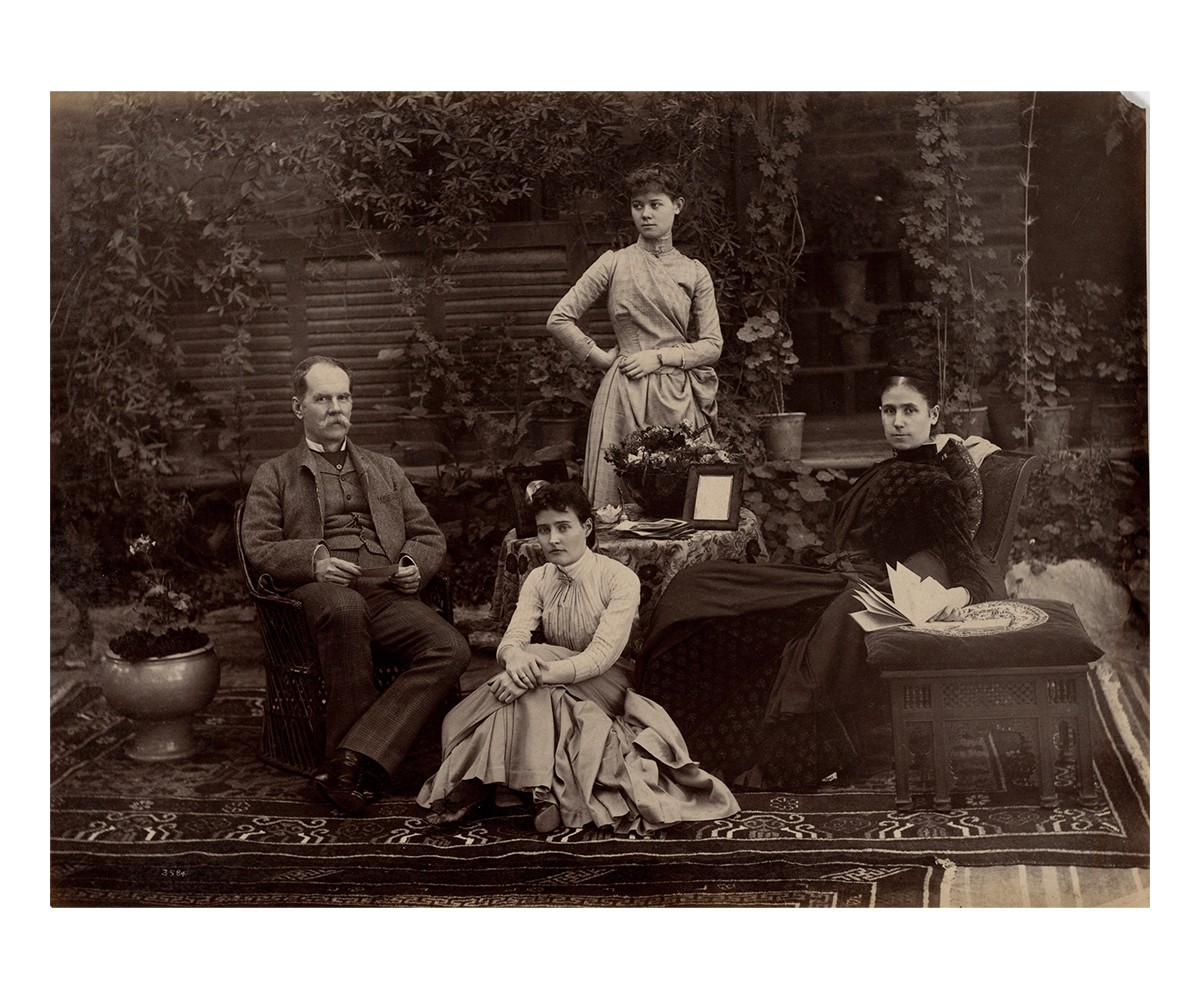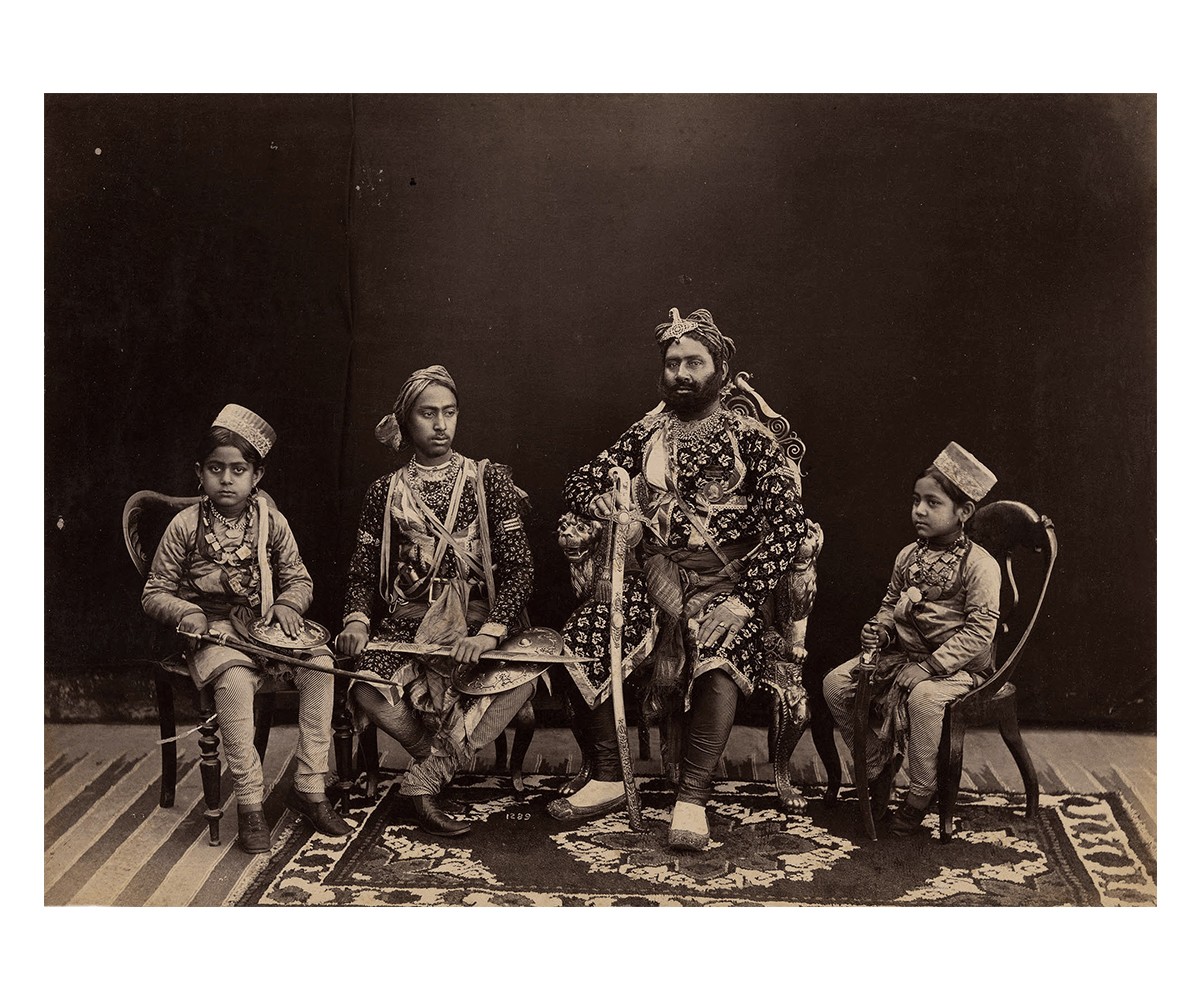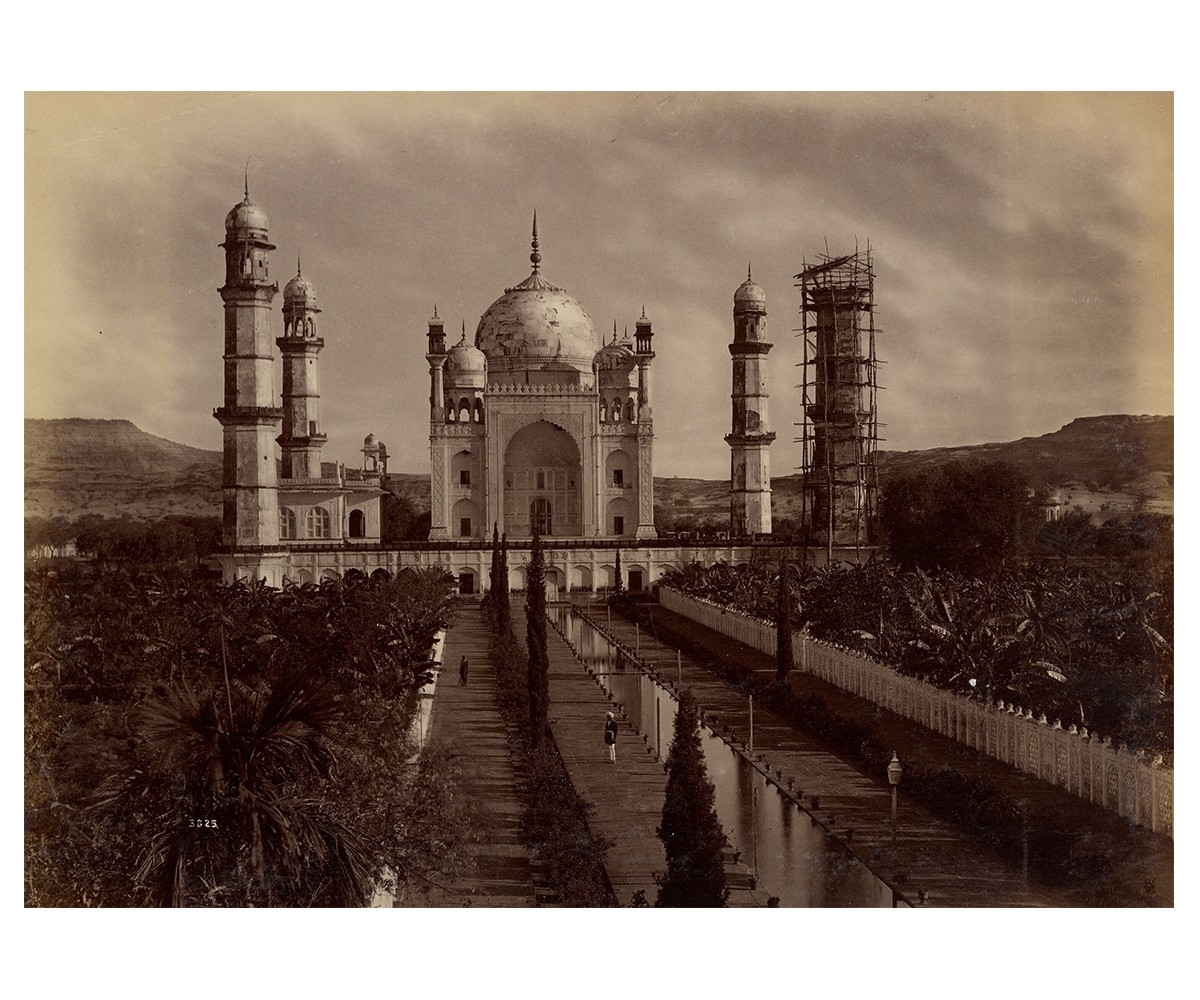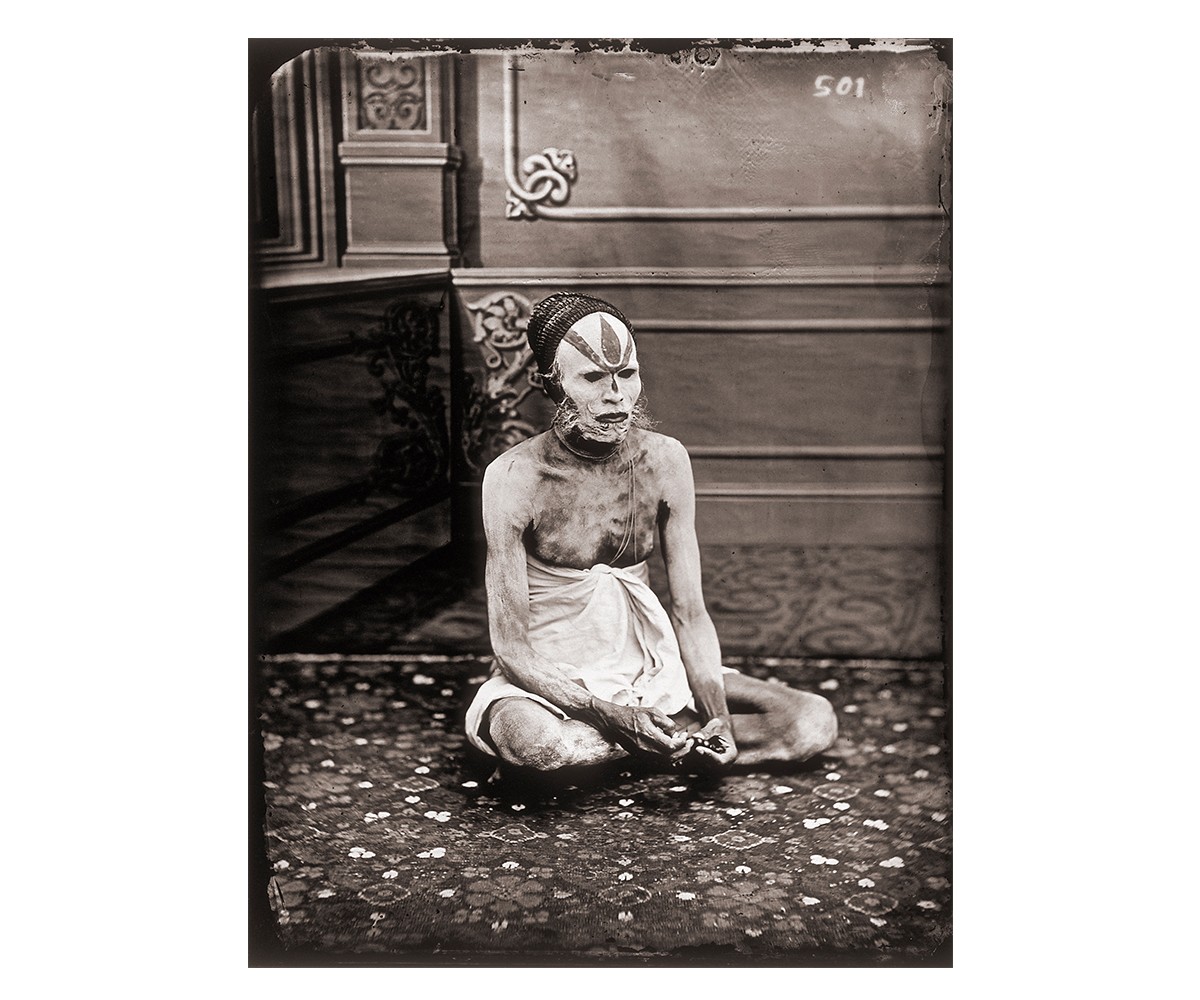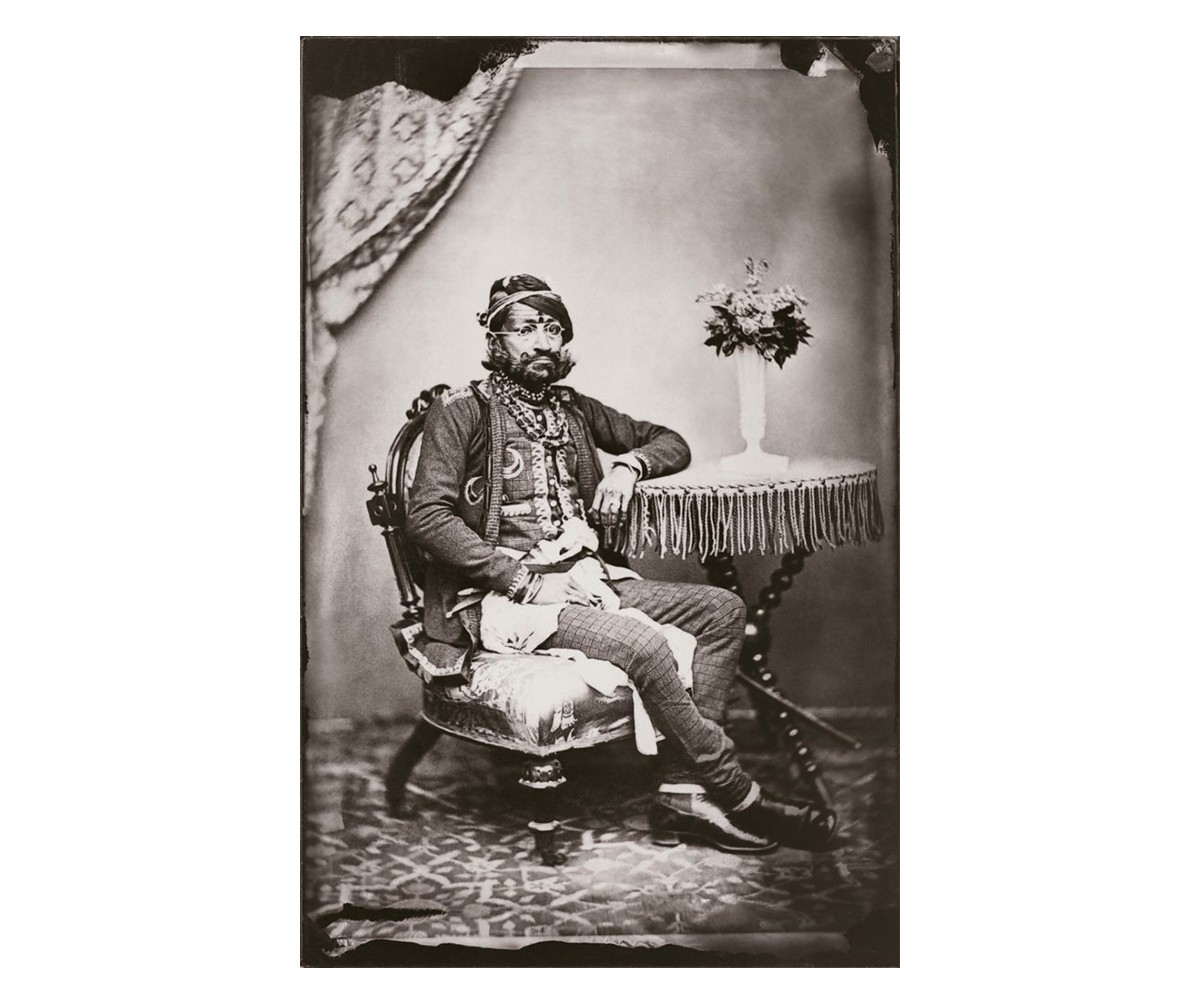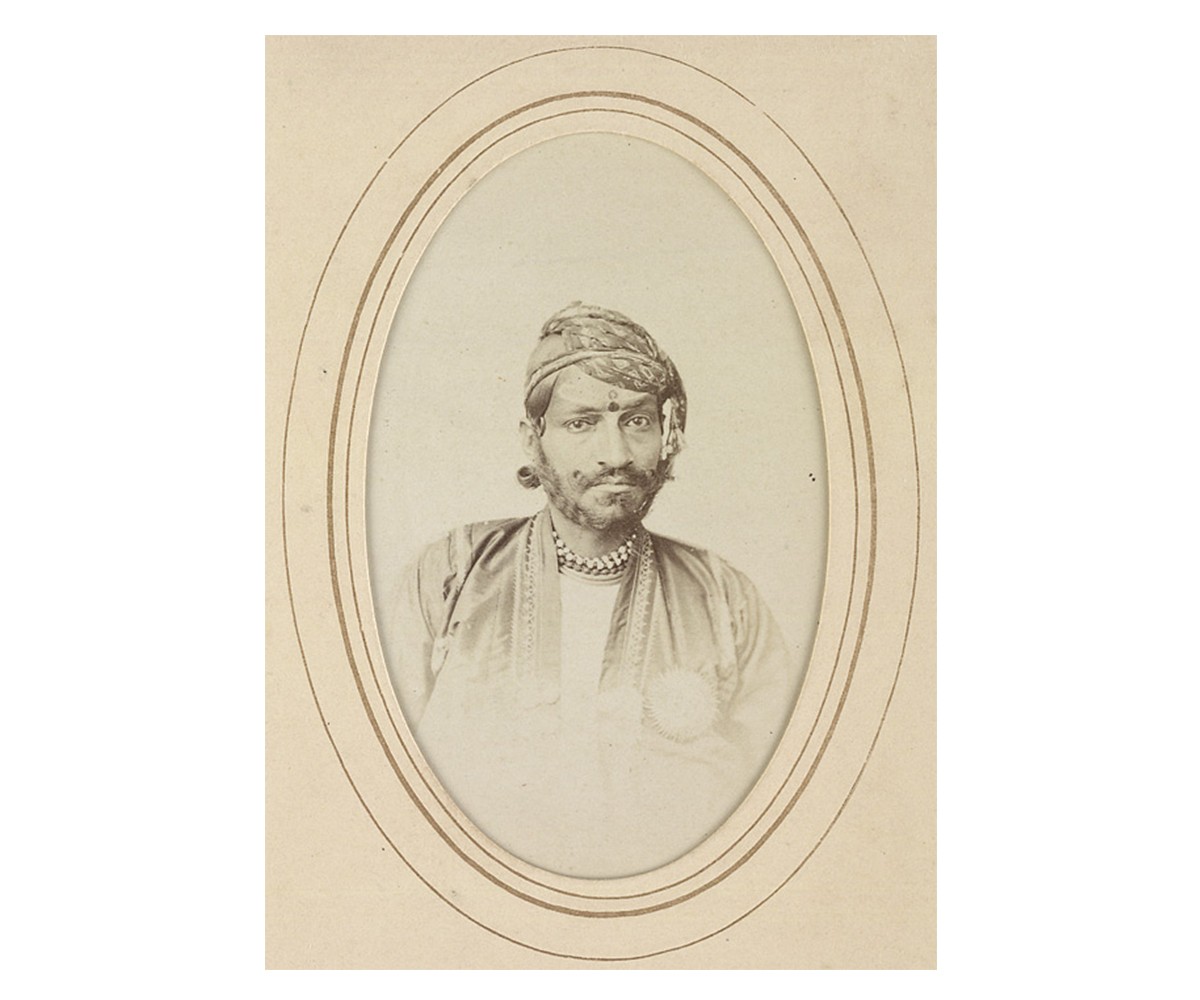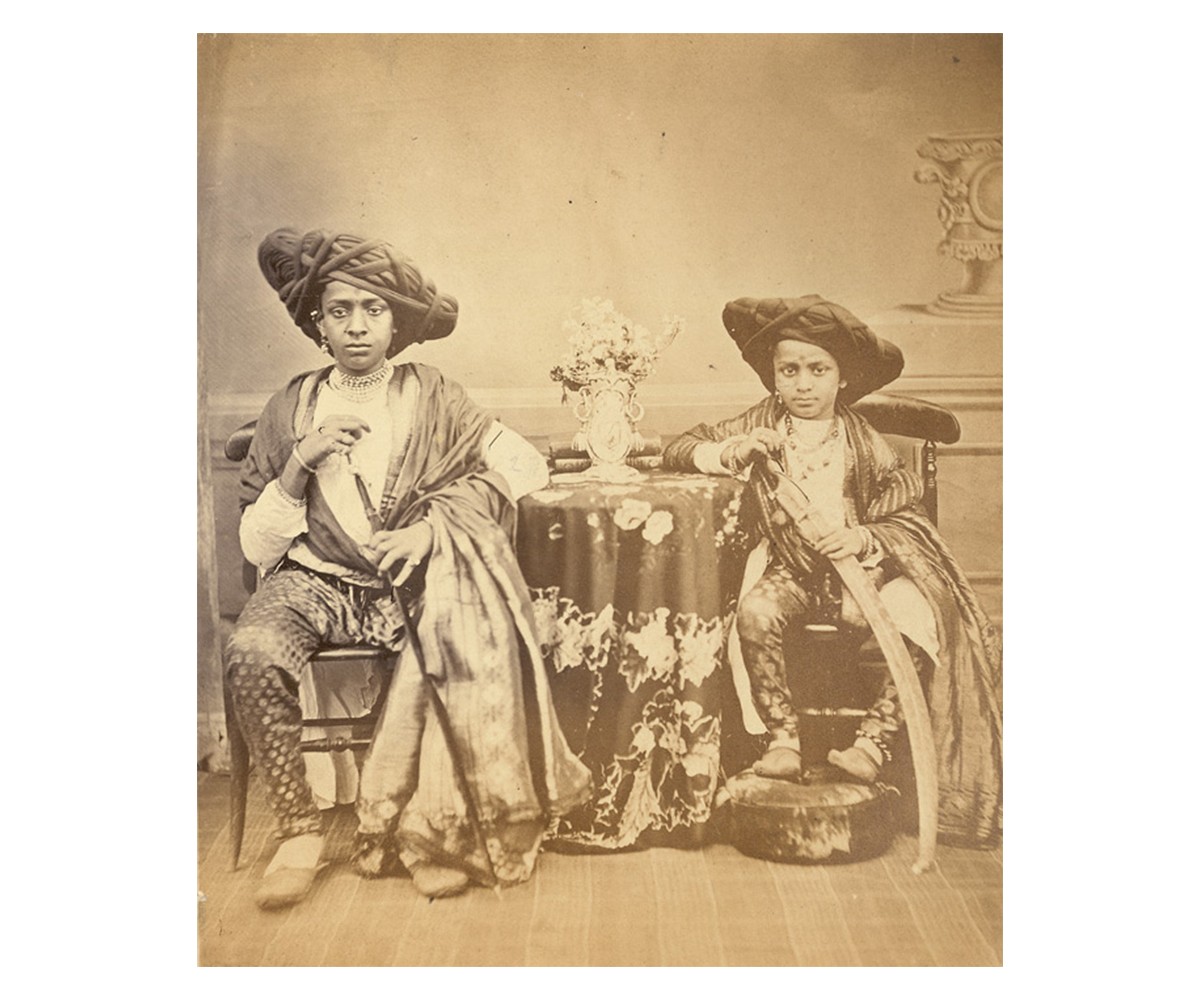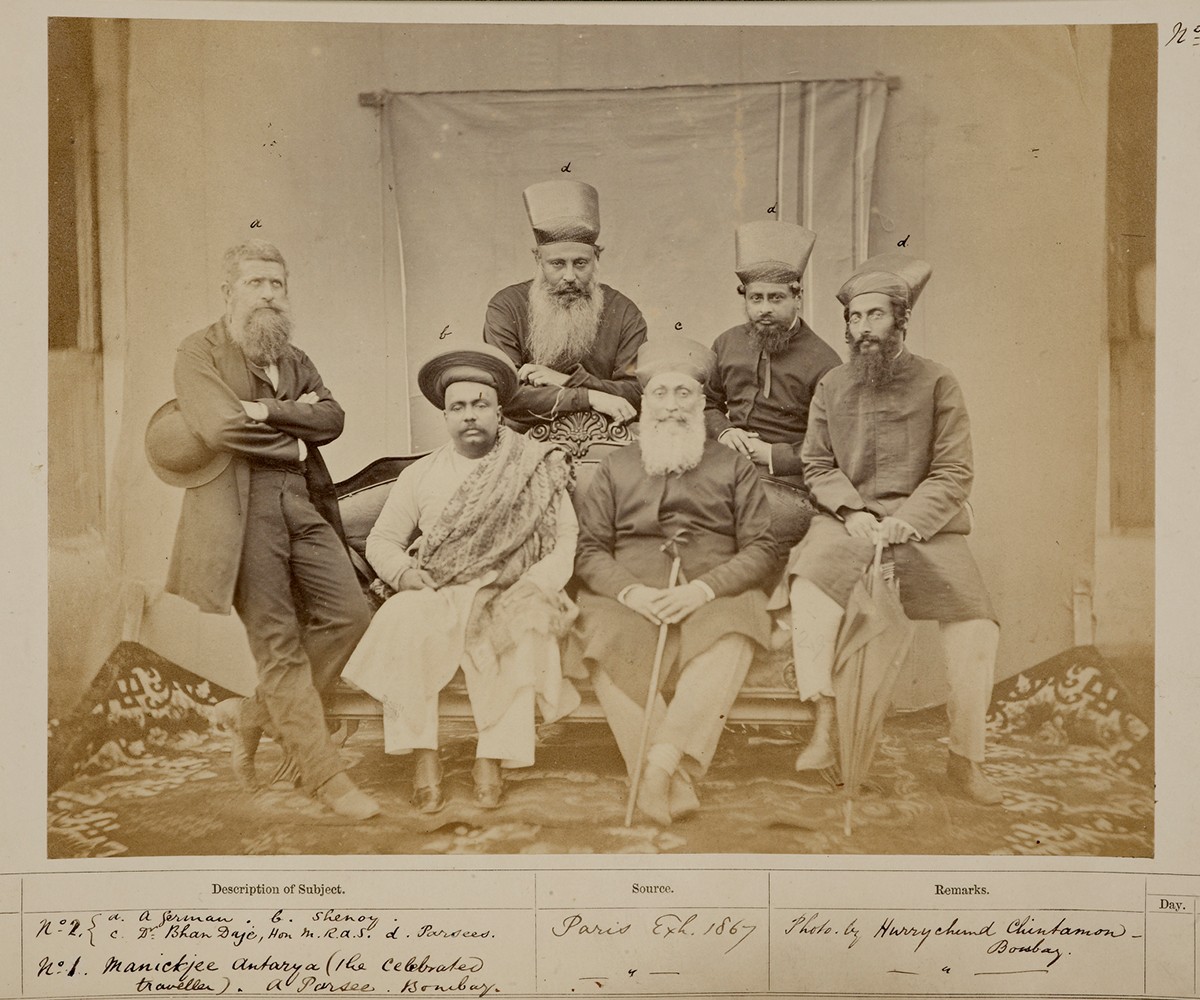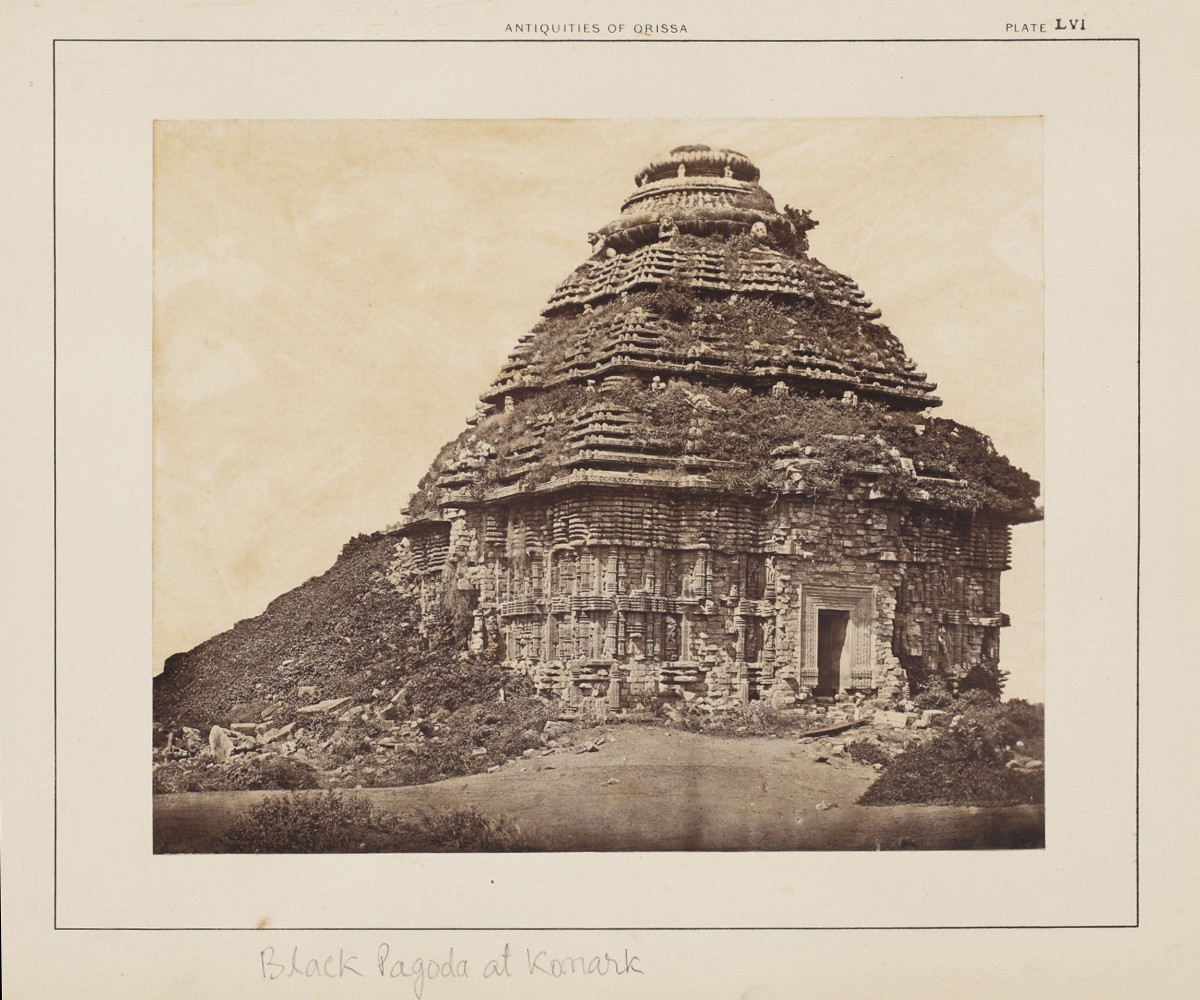The Emergence of a Culture around Photography
1850–1900
In the 1850s, photographic societies are formed in Bombay (1854), Calcutta (1856) and Madras (1857), as forums for amateur British and Indian photography enthusiasts to share their photographs and insights. The first of them, the Photographic Society of Bombay, is modelled after the Photographic Society of London, an organisation formed the year before.
Photography at this time is an expensive and time-consuming practice, restricted to the leisured British and Indian upper classes. It is utilised by the East India Company and later the British government as a means to survey and document British India’s people, places and histories, in the form of architectural surveys and ethnographic images.
By the late-nineteenth century, the work of Indian photographers — Lala Deen Dayal, Hurrichand Chintamon, Rajendralala Mitra and Narayan Daji Lad, among others — also forms a part of this visual corpus, although in terms of the aesthetics and visual compositions, there is little to differentiate between British and Indian photographers. Photography in India also finds patronage from princely courts, with the court photographer taking on a role similar to the court painter, of documenting courtly life and creating portraits of rulers and visiting dignitaries, which are often gifted. These kinds of images, even of the Indian rulers, are visually aligned with the European aesthetic of kingship. Among the rulers of the time, Sawai Ram Singh II is noted for his avid pursuit of photography.
Bibliography
Desmond, Ray. “Photography in Victorian India.” Journal of the Royal Society of Arts 134, no. 5353 (December 1985): 48–61. http://www.jstor.org/stable/41374078.
Gaskell, Nathaniel, and Diva Gujral. Photography in India: A Visual History from the 1850s to the Present. Munich: Prestel, 2018.
Gordon, Sophie. “The Colonial Project and the Shifting Gaze.” Marg 59, no. 4 (2008): 40–53.
Feedback 
This entry appears in
Art in South Asia
Visit Timeline
Associated Timeline Events
First Published: March 11, 2024
Last Updated: May 21, 2024



